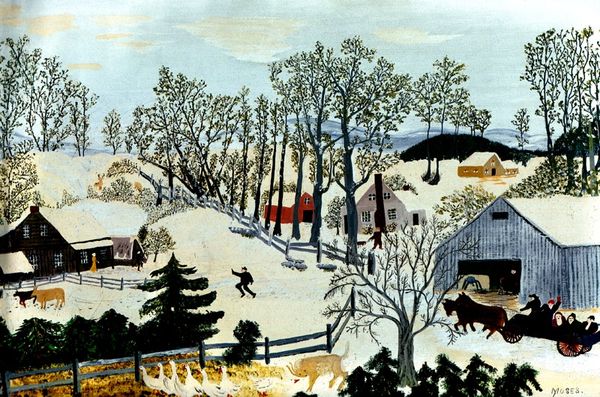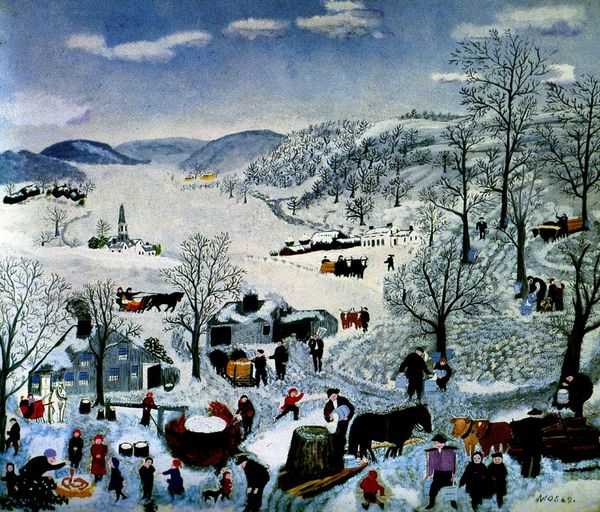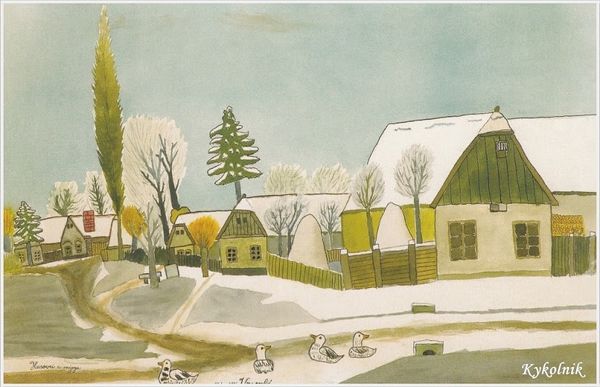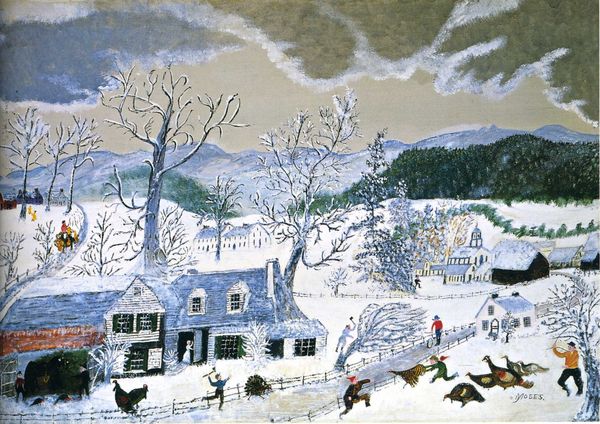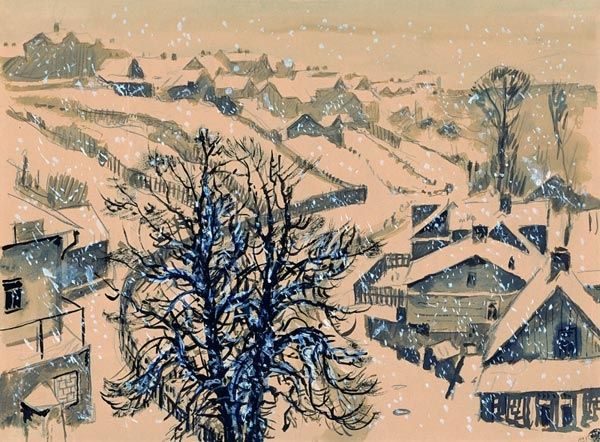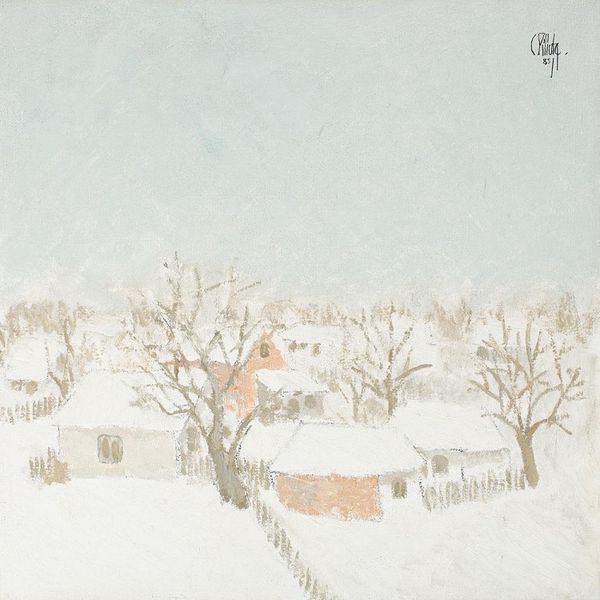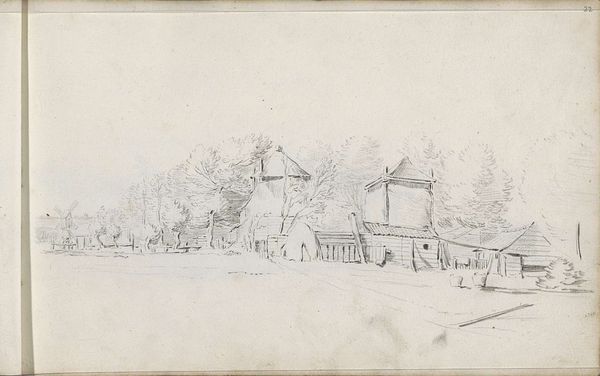
painting, oil-paint
#
painting
#
oil-paint
#
landscape
#
winter
#
house
#
urban cityscape
#
oil painting
#
folk-art
#
genre-painting
#
modernism
Copyright: Grandma Moses,Fair Use
Editor: Here we have "Hoosick Falls, New York, in Winter" painted in 1944 by Grandma Moses. The medium is oil paint. It strikes me as a very peaceful, almost idyllic, rendering of small-town life. How do you interpret this work, especially given its context? Curator: The overwhelming whiteness, the snow, blankets the scene, almost like a collective memory being preserved. This 'peaceful' idyll, as you say, resonates deeply with a yearning for simpler times, especially in the context of 1944, during the Second World War. Notice the train, though, slicing through the landscape; it's a symbol of modernity and connection, but also, perhaps, a reminder of the outside world encroaching on this perceived tranquility. Editor: I hadn’t considered the train in that light. It seems so quaint! Do you think the intentional flatness contributes to this sense of 'memory'? Curator: Absolutely. The lack of traditional perspective flattens the scene, pulling everything into the same plane of vision. This invites the viewer to connect with the image on a more immediate, emotional level. Think about folk art traditions and how they often use flattened perspective to emphasize storytelling over realism. What stories do you think are being told here? Editor: Perhaps stories of community and resilience? The houses clustered together, the figures interacting… It does feel like a celebration of everyday life, a hope for a return to normalcy maybe. Curator: Precisely. The painting acts as a powerful cultural artifact, encapsulating desires and anxieties during a tumultuous time. It's interesting how a seemingly simple scene can hold such complex emotional and historical weight, isn’t it? Editor: It truly is. I will never look at snow the same way! Thank you for showing me these additional layers of context in "Hoosick Falls, New York, in Winter."
Comments
No comments
Be the first to comment and join the conversation on the ultimate creative platform.
